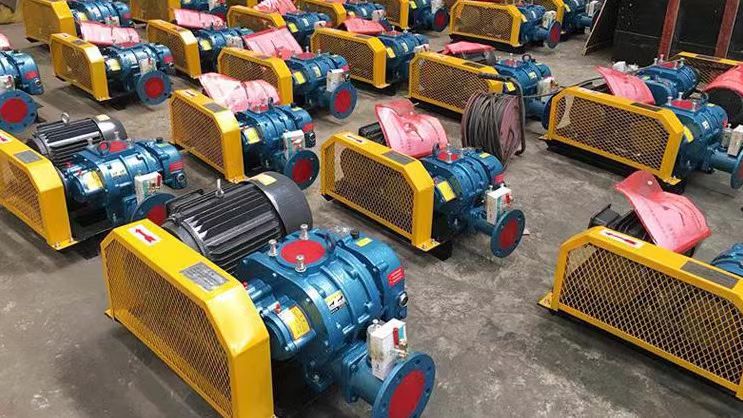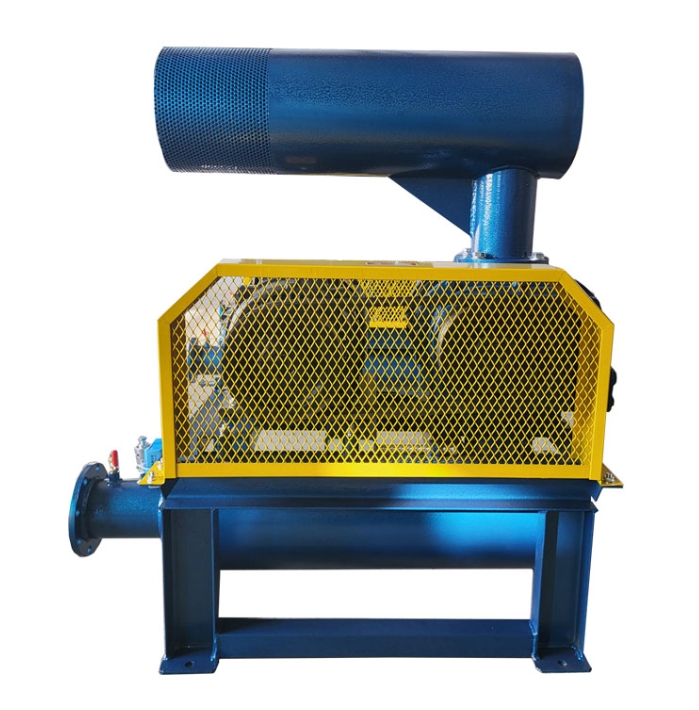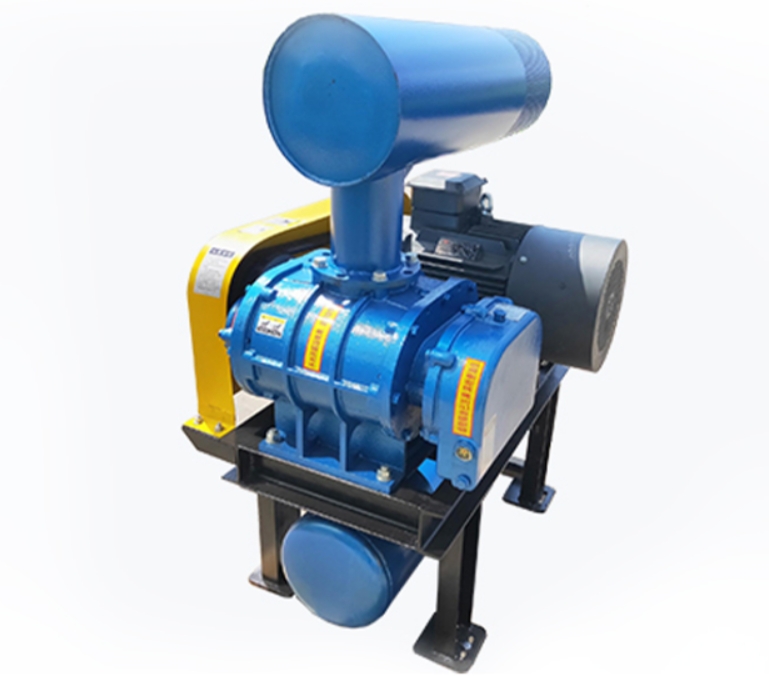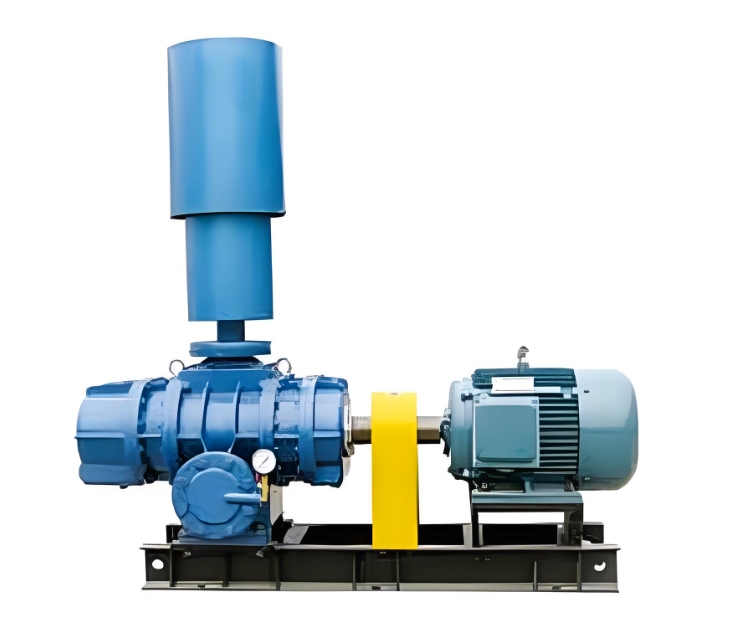Analysis and selection calculation of the relationship between power and air volume of Roots blower**
**Keywords core: power air volume curve, efficiency optimization, calculation formula

**1、 Theoretical basis of power and air volume**
The power (P) and air volume (Q) of a Roots blower exhibit a non-linear relationship, mainly influenced by the following factors:
-Volume efficiency: The fixed air volume (theoretical air volume) conveyed by the fan impeller per revolution, but the actual air volume may decrease by 5-15 due to internal leakage.
-Axis power formula:
\[
P = \frac{Q \times \Delta P}{6120 \times \eta}
\]
Among them, Δ P is the pressure difference (kPa), and η is the mechanical efficiency (usually 60-75).
**2、 The impact of variables in actual operation**
1. Speed regulation: The air volume is proportional to the speed (Q ∝ n), but the power increases with the cube of the speed (P ∝ n3). Variable frequency speed regulation can save energy.
2. * * Temperature and Density * *: High temperature environments can reduce air density, resulting in a decrease in actual air volume and requiring increased power compensation.
**3、 Selection case analysis**
A certain sewage treatment plant requires an air volume of 20m3/min and a pressure of 49kPa:
-Theoretical power calculation: If η=70, then P=(20 × 49)/(6120 × 0.7) ≈ 22.4kW
-Selection suggestion: Choose a 30kW motor (with 20 margins reserved).
**4、 Energy saving optimization strategy**
-By using a frequency converter to match load changes, energy consumption can be reduced by 15-30%.
-Regularly maintain gears and seals to reduce internal leakage losses.
**Industry application: The pneumatic conveying system in cement plants requires high air volume and low pressure, with power concentrated between 45~110kW; However, aeration in electroplating tanks requires low air volume and high pressure, with a power typically less than 15kW.





